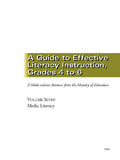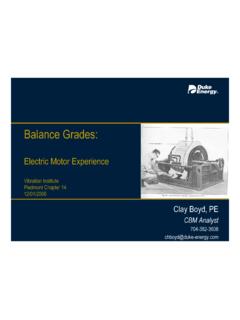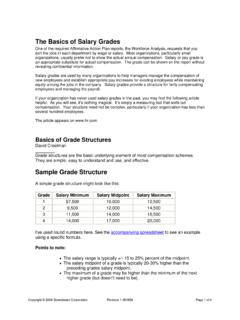Transcription of Grades 4 – 6 Non-Equipment Activities
1 Eastern Active Schools Grades 4 6 Non-Equipment Activities 1 Grades 4 6 Non-Equipment Activities Table of Contents Tour du Canada 2 Heart Smart 3 Sports Galore 4 One Behind 5 Football Drills 5 Miss Mary Mack 6 Memory Lane 7 Number Crunching 8 Moving With Adverbs 9 Machine Game 9 Switch and Rotate 10 Angle Arms 11 Angle Alphabet 12 Team Seating 12 Pirate Ship 13 Untying The Knot 14 Movements by Memory 15 Human Tic Tac Toe 16 Language Lights 16 Thread The Needle 17 Pop Jack in The Box 17 Eastern Active Schools Grades 4 6 Non-Equipment Activities 2 Tour du Canada Formation: Standing at desks Equipment: None Learning Outcomes: Social Studies Rules/ Directions: 1. Teacher leads the class on a tour of Canada. Students move according to the actions listed below. March across the Confederation Bridge to PEI Surf in the Atlantic Ocean Climb up a Douglas Fir, one of the tallest and longest living trees in Canada Jog (run) on a spot like Terry Fox Stomp the grapes in Niagara, Ontario Pick the berries in Newfoundland and then oranges in BC Inline skate on the Boardwalk Ski in Whistler, BC Climb Mount Robson, the highest peak in the Canadian Rockies Crawl through the Okanagan Valley Hit a home run in Montreal Suggestions: 1.
2 Teachers may use the same concept with any province or a different country. 2. Teacher can use a wall map to point out specific landmark areas. Eastern Active Schools Grades 4 6 Non-Equipment Activities 3 Heart Smart Formation: Standing at desks Equipment: None Learning Outcomes: Heart Health Rules/Directions: 1. Teacher will discuss the heart: Where it is located? Left side of chest. What size is it? Size of fist. Function? Deliver blood to the body. What strengthens the heart? Jumping, swimming, jogging. (Students will act out each activity) What weakens the heart? Inactivity, smoking, unhealthy diet. 2. Teacher calls out a habit that strengthens or weakens the heart. 3. If the habit strengthens the heart, the students will respond by jumping 5 times. If the habit weakens the heart, the students will respond by squatting 5 times. Riding a bike - jump Eating 4 pepperoni pizzas - squat Walking your dog - jump Smoking cigarettes- squat Never going outside to play - squat Dancing with your friends - jump Skating - jump Never eating fruits/vegetables - squat Riding a scooter - jump Shooting baskets - jump Playing Play station - squat Eating fast food - squat Raking the leaves - jump Washing the car - jump Taking the stairs - jump Taking the elevator - squat Swimming - jump Eating potato chips and chocolate bars - squat Eastern Active Schools Grades 4 6 Non-Equipment Activities 4 Sports Galore Formation: Standing at Desks Equipment: None Learning Outcomes: Mathematics, Physical Education Rules/Directions: 1.
3 Teacher calls out the following sports skills to mimic: Shooting a jump shot Running through tires Batting a baseball Serving a tennis ball Downhill skiing Spiking a volleyball Swinging a golf club Throwing a football Juggling a soccer ball on your knees Shooting an arrow Shooting a hockey puck Swimming underwater Fielding a ground ball and throwing to first base Dunking a basketball 2. Teacher can also integrate skills into word problems and have students repeat the number he or she calls out: If William made 5 jump shots and 2 went in, how many did he miss?(3) If Lisa hits 2 home runs, how many bases would she have to touch?(8) Suggestions: 1. Do each sport skill for 30 seconds. 2. Adjust the problems to the level of knowledge in class. Eastern Active Schools Grades 4 6 Non-Equipment Activities 5 One Behind Formation: Standing Equipment: None Learning Outcomes: Mobility, coordination and ability to listen to both verbal and non-verbal cues.
4 Rules/Directions: 1. The teacher starts to do an exercise while the class marches on the spot. After doing the movement for about 30 seconds to 1 minute, the leader changes the exercise. 2. Every time the leader changes the exercise the class does the previous exercise. Choose from the following four and repeat for three times. Examples of exercises: (See Appendix A for more movements) Knee lifts with arms pushing overhead Small kicks (remind students not to snap their knee) with arms pushing forward Heel taps with biceps curls Side steps (moving from one side to the other) with arms swinging to the sides Football Drills Formation: Standing in a circle or semi-circle Equipment: None Learning Outcomes: Strength, coordination and ability to listen to both verbal and non-verbal cues Rules/Directions: 1. Arrange the students a semi-circle formation. Check for good spacing. 2. Start and stop the activity with music, allowing the drill to continue for about two to three minutes at first.
5 3. Increase the time as fitness levels increase. Movement Suggestions: On the signal, jog in place with knees high and clap for 20 seconds, then on signal do toe taps On the signal, pretend to jump rope 10 times, then on signal, squat. Note: For more examples of movements, please refer to Appendix A at the back of this manual. Eastern Active Schools Grades 4 6 Non-Equipment Activities 6 Miss Mary Mack Formation: Standing facing a partner Equipment: None Learning Outcomes: Strength, balance, coordination and ability to listen to both verbal and non-verbal cues. Rules/Directions: 1. Teach the song first with hand signals. The tune is the same for every line ("soh, lah, ti, doh, doh, doh"). Actions: Cross arms to shoulders Pat thighs Clap hands together Clap partner right, clap together, clap partner left, clap together Add in leg squats or jumps with this as they become more proficient. Song: Miss Mary Mack, Mack, Mack, All dressed in black, black, black, With silver buttons, buttons, buttons, All down her back, back, back She asked her mother, mother, mother, For fifty cents, cents, cents, To see the elephants, elephants, elephants, Jump over the fence, fence, fence She jumped so high, high, high, She reached the sky, sky, sky, And never came back, back, back, Till the fourth of July, July, July Eastern Active Schools Grades 4 6 Non-Equipment Activities 7 Memory Lane Formation: Standing at desks with partners Equipment: None Learning Outcomes: Eye-hand coordination, listening skills.
6 Rules/Directions: 1. Teacher calls out one task at a time and partners complete that task. 2. Tasks should be called out in the order provided High five right High five left Low five right Low five left High ten Low ten Backwards ten high (students turn around with their backs to each other and high ten over their heads). Backwards ten low (students turn around with their backs to each other, they then give a low ten by their sides). Tunnel ten (feet apart, back to back, reach between legs and hit ten). Sole of shoe right Sole of shoe left Elbow right Elbow left 3. Partners repeat the tasks beginning with the first task each time. 4. Have students repeat sequence as fast as they can with accuracy. Eastern Active Schools Grades 4 6 Non-Equipment Activities 8 Number Crunching Formation: Sitting on the floor Equipment: None Learning Outcomes: To strengthen muscles while learning multiplication tables. Rules/Directions: 1.
7 Students do sets of different types of movements and count the total number by using multiplication skills. For example, a regular crunch and alternate side crunches could form a set of three. 2. Students do multiple sets and count using only the sums (3, 6, 9, 12, 15, etc.). 3. Partners can then ask additional math questions ( If you did five sets of five different crunches, how many total crunches would you have done?). Suggestions: 1. Stress the importance of doing correct technique. For the crunch, use appropriate protocol. 2. Use fewer or more movements depending on grade levels. 3. Use higher or lower multiples. 4. Ask division, addition, or subtraction questions. 5. Apply progression techniques, such as adding more sets each week. 6. Have the student make up a math word problem using sets of crunches. For example, "Joe does four sets of four crunches. Mary does five sets of three crunches. Who does more crunches? How many more?". Eastern Active Schools Grades 4 6 Non-Equipment Activities 9 Moving With Adverbs Formation: Standing Equipment: None Learning Outcomes: This activity reinforces the concept that adverbs describe the verb.
8 The activity can be modified to reinforce the correct spellings of adverbs (adding an -ly), Locomotor skills Rules/Directions: 1. Start by reminding the students that most adverbs end in -ly and that their most common use is describing verbs. 2. Have the students move around the general space doing various locomotor skills. 3. Then have the students alter the way they are doing the skills by listening to the adverbs being called out by the teacher. For example, start with walking. 4. Have the students walking at first and then add the adverb by telling them to walk quickly. 5. Switch to walking slowly, nonchalantly, quietly, loudly, carefully, etc. 6. Change the locomotor skills and alter the adverbs to those that best suit those new skills. Suggestions: 1. Make the activity into a modified "Simon Says" game (without the elimination) by having the students listen for the correct formation of the adverb. For example, have the students walking quickly.
9 2. Then tell the students to "walk slow." The students should keep walking quickly because the teacher did not say "walk slowly." They should only change their skill when the adverbs are correct. Machine Game Formation: Groups of three or four Equipment: None Learning Outcome: Ability to visualize a process and act out steps Rules/Directions: 1. Split into groups of 3 or 4 (depending on size of group). 2. Each group has to 'become' a machine. All group members must also be physically touching. 3. Each member of the group must have their own movement, and their own sound. 4. Each group's machine must have a function and a name. (Example: Machine name is dishwasher, one person spins around and makes swooshing sounds, one person is the water spray with movement, etc.) Eastern Active Schools Grades 4 6 Non-Equipment Activities 10 Switch and Rotate Formation: Standing Equipment: None Learning Outcomes: Listening skills Rules/Directions: 1.
10 Have students find a partner in a general space. 2. Have one student be the leader and the other student the follower. 3. The follower should be one arms length away from the leader. (Should be able to touch the back of the leaders shoulder). 4. On the teachers signal, the leader is allowed to WALK around the room. 5. The follower is to follow the leader as best they can to try and stay one arms length away. 6. When the teacher says STOP the students all freeze immediately and the teacher needs to check and see if the followers can still touch the shoulder of the leader. 7. The teacher has them play again but this time when the teacher says SWITCH the leader and follower switch roles by turning around. Now the follower is the leader and the leader is the follower. 8. When the teacher says STOP see if the follower can touch the shoulder of the leader. Suggestions: 1. To make it more difficult the teacher can introduce the term ROTATE. When students here that term the follower is to go to the front of the line and then become the leader.







